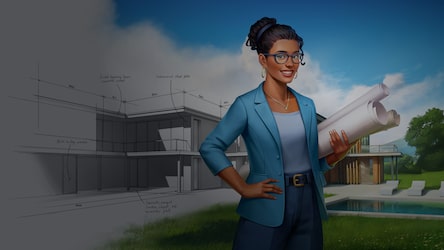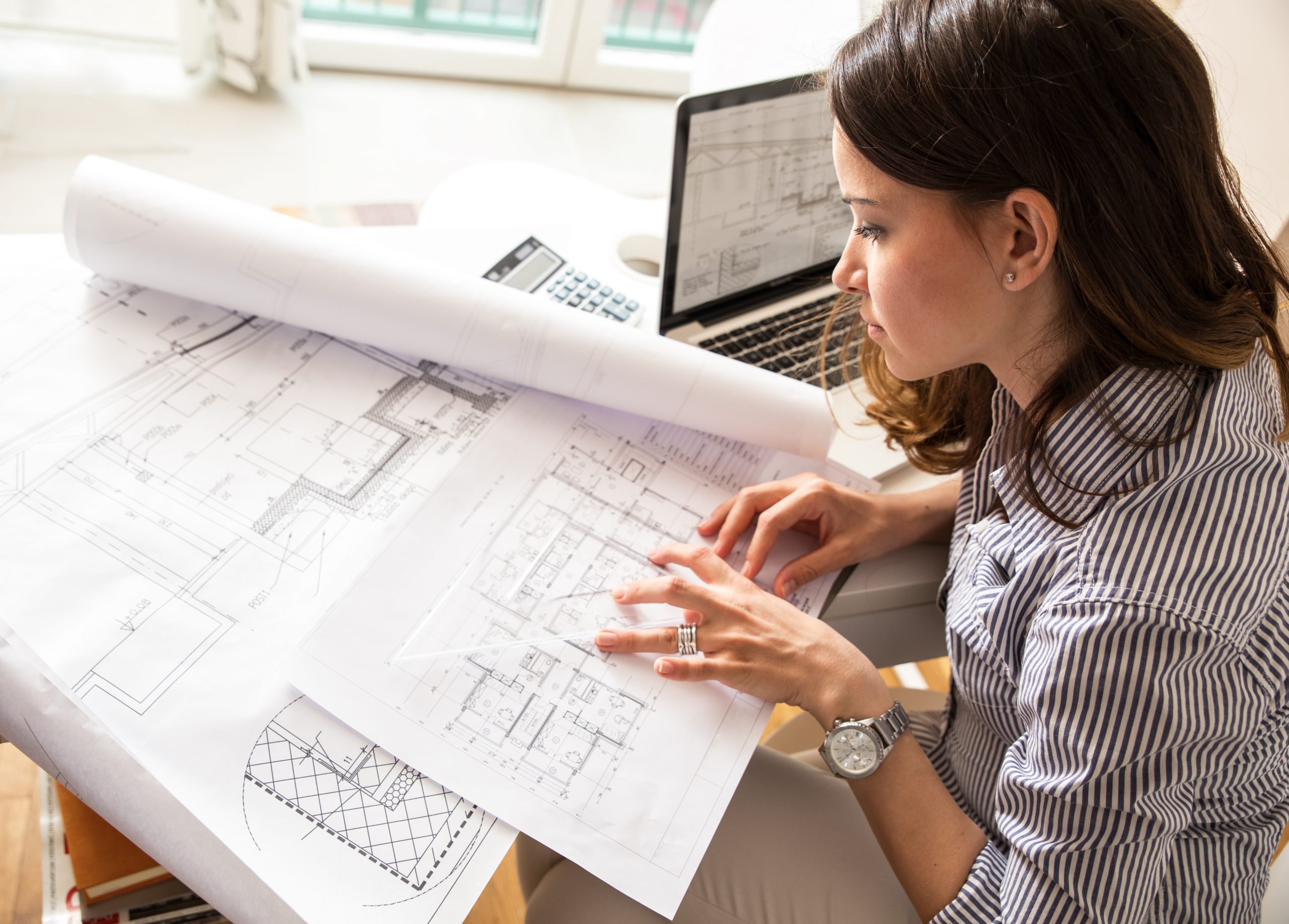Architect Rules for Designing Classic Interiors
Architect Rules for Designing Classic Interiors
Blog Article
Comprehending the Diverse Occupation Paths Available for Aspiring Architect
As an ambitious Architect, you have a world of profession paths waiting for you. Whether you're attracted to typical architecture or the subtleties of lasting layout, there's a niche that lines up with your passions.
Conventional Architecture: Creating Buildings and Frameworks
Traditional style concentrates on designing structures and frameworks that mix capability with aesthetic charm. As you explore this field, you'll value the detailed equilibrium between type and function. You'll learn to draw ideas from historical styles, including components like proportion, materials, and craftsmanship. Your layouts can mirror cultural heritage, showcasing local practices while meeting modern-day demands.
You'll create abilities in drafting, model-making, and website evaluation, permitting you to envision and interact your ideas effectively. Engaging with clients, you'll need to recognize their vision and translate it into practical designs.
Additionally, constructing codes and sustainability techniques are necessary in your work, ensuring your structures are safe and eco-friendly. As you grow in your profession, you'll discover chances in property, commercial, or perhaps restoration tasks, each offering unique obstacles. Welcoming typical style paves the method for a meeting career that pays tribute to the past while forming the future.
Urban Planning: Shaping Neighborhoods and Public Spaces
As an aspiring Architect, you can play an essential function as a city coordinator, transforming just how areas function and engage. By using neighborhood involvement methods, you'll guarantee that homeowners have a voice in forming their environment. Plus, incorporating sustainable design principles will aid create spaces that not just fulfill today's needs yet likewise protect the future.
Role of Urban Planners
While numerous could think of designers as the sole visionaries behind structures, city coordinators play a vital duty in shaping the wider landscape of communities and public areas. By collaborating with various stakeholders, you'll aid create parks, transportation systems, and domestic areas that promote social interaction and access. Your competence in spatial style and neighborhood dynamics allows you to picture future development while protecting social heritage.
Community Interaction Techniques
Efficient area engagement strategies are crucial for city planners to guarantee that the voices of locals are heard and valued in the planning process. To foster purposeful discussion, you ought to prioritize open discussion forums and workshops where neighborhood members can share their concepts and worries. Usage studies and social media to reach a broader target market, making certain diverse perspectives are consisted of. Collaborating with neighborhood companies can boost trust fund and promote much deeper connections. It is necessary to offer clear information about decision-making procedures and suggested jobs, enabling locals to feel educated and equipped. By proactively paying attention and incorporating responses, you'll produce rooms that reflect the neighborhood's needs, ultimately bring about even more successful and lasting urban atmospheres. Embrace openness and constant dialogue for long lasting effect.
Sustainable Layout Concepts
When designing urban areas, integrating sustainable style concepts is vital for creating atmospheres that flourish both ecologically and socially. Take into consideration incorporating environment-friendly rooms, like yards and parks, to boost biodiversity and boost air quality.
Creating with water preservation in mind is also crucial-- consider rain gardens and permeable surfaces to take care of stormwater. Including area participants throughout the preparation process guarantees that the rooms you create satisfy their requirements and motivate social communication. By accepting these concepts, you'll add to vivid, sustainable metropolitan landscapes that benefit everybody.

Landscape Design: Creating Sustainable Outdoor Atmospheres
As you explore landscape architecture, you'll uncover crucial design concepts that produce beautiful and functional outside rooms. Lasting methods play a crucial function in making certain these environments flourish while lessening ecological impact. Plus, you'll locate a range of occupation opportunities that permit you to make an actual difference in exactly how people communicate with nature.
Layout Principles in Landscape
Recognizing layout concepts in landscape style is vital for creating lasting outside environments that balance with nature. You'll require to contemplate aspects like scale, balance, and percentage to ensure your styles really feel natural and inviting. Integrating native plants not just boosts biodiversity yet additionally reduces water usage, making your landscape durable. Think of the circulation of area and how people communicate with it; pathways and seating areas must welcome expedition and leisure. In addition, focus on seasonal modifications, developing with materials that complement the surroundings year-round (Architect). By prioritizing sustainability and aesthetics, you can create outside rooms that enrich the area and promote wellness. Embracing these principles will certainly establish a strong foundation for your job in landscape style.
Sustainable Practices Summary
Sustainable practices in landscape architecture not only concentrate on aesthetic appeals but likewise prioritize ecological health and wellness and resource preservation. By incorporating indigenous plants, you enhance biodiversity and minimize the need for chemical fertilizers and chemicals. Executing effective irrigation systems assists conserve water and minimizes overflow, safeguarding neighboring ecological communities. You can design rooms that advertise dirt wellness, such as exercising and utilizing natural materials permaculture principles. In addition, incorporating environment-friendly facilities, like rainfall yards and porous pavements, help in stormwater administration and minimizes city warmth. When you produce outdoor atmospheres with sustainability in mind, you add to a healthier planet and give spaces that promote area link. Inevitably, these methods ensure your designs benefit both individuals and the atmosphere for years to find.
Job Opportunities Exploration
With a strong structure in lasting practices, landscape style uses a variety of career courses that allow you to make a purposeful influence on the environment. You might function as a landscape developer, creating aesthetically pleasing and functional outside rooms, or specialize in ecological repair, aiding to revitalize damaged ecosystems. Urban planners often team up with landscape engineers to develop green areas in metropolitan settings, boosting city livability. If you're enthusiastic about education and learning, consider ending up being a landscape style instructor, motivating future generations. Furthermore, you may deal look at this now with nonprofits concentrated on environmental sustainability or engage in research study to introduce brand-new methods. Each course not just forms stunning atmospheres but additionally fosters a much healthier planet for future generations.
Sustainable Design: Concentrating On Eco-Friendly Practices
As you explore your occupation in design, embracing environmentally friendly methods can set you apart in an affordable area. Lasting layout focuses on developing structures that decrease environmental effect while enhancing resident well-being. By including eco-friendly products, energy-efficient systems, and lasting building strategies, you'll contribute to a greener future.
Start by obtaining expertise of eco-friendly accreditations like LEED or BREEAM, which can boost your credentials. Think about just how all-natural light, ventilation, and thermal efficiency can enhance layout. Work together with designers and ecological specialists to introduce solutions that lower waste and conserve resources.
Don't fail to remember the significance of area participation-- interesting local stakeholders can influence styles that integrate with the setting. As customers increasingly focus on sustainability, your competence in eco-friendly practices will not just attract projects but likewise meet your passion for liable design. Accept this essential element of the career, and watch your profession prosper.
Historic Conservation: Protecting and Restoring Cultural Heritage
While you commence on your building trip, think about the crucial function of historical preservation in preserving our social heritage. This field concentrates on the protection and restoration of significant buildings, websites, and frameworks that tell the tales of our past. By taking part in historic conservation, you'll aid guard the architectural legacy that shapes community identity.
As a historical preservation Architect, you'll evaluate historic significance and evaluate the problem of frameworks. You'll work carefully with preservationists and chroniclers to assure authentic remediation strategies are utilized. This occupation path permits you to mix creativity with research, enabling you to develop solutions that appreciate initial materials and workmanship.
Your work not just adds to sustainability by reusing existing buildings but also fosters a sense of pride within areas. Welcoming this course will help you end up being a guardian of history, protecting the tales and visual appeals that enrich our lives.
Interior Design: Enhancing Indoor Spaces
Historic preservation and indoor style both share a commitment to improving the developed environment, but they concentrate on different elements. While historical conservation highlights maintaining a framework's historical and cultural value, indoor architecture zeroes in on maximizing interior rooms for capability and aesthetic appeals.
As an aspiring Architect, you'll locate that indoor design enables you to blend imagination with technical skills. You'll make rooms that not only look good but also advertise convenience and effectiveness. This area includes understanding how light, shade, and materials communicate within an area, affecting state of mind and functionality.
You'll work with numerous projects, from domestic homes to industrial offices, making certain that each setting fulfills the needs of its occupants. By focusing on user experience, you can transform insides into motivating and functional rooms, making a substantial effect on how people connect with their environments. Welcome the chance to enhance indoor environments and form the method people live and work.
Industrial Layout: Merging Performance With Aesthetic Appeals
Industrial layout plays a necessary duty in producing products that effortlessly blend appearances with functionality, making certain that what you make use of daily is not just visually appealing but likewise practical. As an ambitious Architect, you might immerse yourself in this field, concentrating on developing everything from furnishings to consumer electronic devices. Your work entails comprehending user demands, products, and manufacturing procedures, allowing you to develop cutting-edge options that enhance daily experiences.
In industrial style, you'll typically team up with designers, marketers, and manufacturers, making certain that your styles are not just gorgeous however additionally feasible. You'll discover to balance type and function, focusing on use without sacrificing style. By honing your skills in mapping out, 3D modeling, and prototyping, you'll be well-appointed to bring your concepts to life. This career path uses a dynamic setting where imagination fulfills practicality, making it a fulfilling choice for designers thinking about forming the items of tomorrow.
Regularly Asked Concerns
What Educational Qualifications Do I Need to Come To Be a Designer?
To become an engineer, you'll need a professional degree in style, commonly a Bachelor's or Master's. Furthermore, you'll have to finish an internship and pass the Architect Enrollment Evaluation to exercise lawfully.
Exist Accreditation Requirements for Different Building Profession Paths?
Yes, there're qualification requirements for various architectural courses. Architect. You'll need to pass tests, complete teaching fellowships, and in some cases pursue specialized training, relying on your selected emphasis, like landscape architecture, metropolitan design, or historic preservation
What Software Program Skills Are Essential for Designers Today?

How Can I Gain Practical Experience While Researching Style?
You can get practical experience by interning at building firms, this website joining style competitions, offering for neighborhood tasks, or working together with schoolmates on real-world projects. These opportunities improve your skills and construct important links in the industry.
What Work Opportunities Exist Outside Standard Style Firms?
You can check out numerous job chances outside traditional design companies, like metropolitan preparation, interior decoration, landscape style, building monitoring, real estate growth, or even functions in sustainability consulting. Each deals one-of-a-kind challenges and benefits.
Whether you're attracted to look at more info conventional style or the subtleties of sustainable style, there's a particular niche that aligns with your rate of interests.When developing city spaces, incorporating sustainable style concepts is crucial for developing environments that flourish both environmentally and socially.As you discover landscape style, you'll uncover important design concepts that create gorgeous and practical exterior spaces.Understanding design principles in landscape architecture is important for producing lasting exterior settings that integrate with nature.In commercial layout, you'll usually work together with suppliers, designers, and marketing professionals, making sure that your styles are not only beautiful yet likewise possible.
Report this page